How large cities in Donetsk region are preparing for an attack by two hostile forces — the Russians and the cold
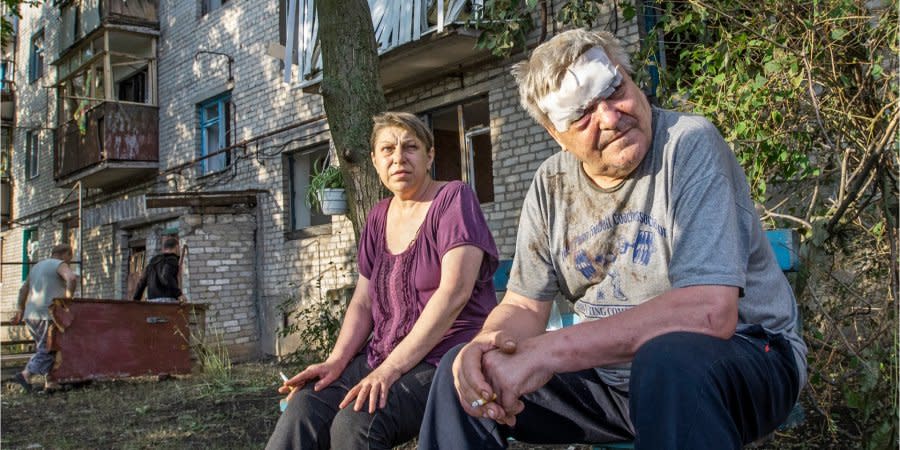
(Mykolaivka — Kramatorsk — Chasiv Yar — Bakhmut)
It’s morning in the town of Mykolaivka, located 18 kilometers east of Slovyansk, Donetsk Oblast, and a 23-year-old military medic is washing an ambulance with a hose. Scratches from shrapnel are visible on the paintwork, and there’s cardboard instead of the rear window.
Read also: Eyewitnesses tell how Russian invaders shot three teenagers near Chernihiv
Mykolayivka, once home to 12,000 people, is closer to the front line than Slovyansk, where the war in the Donbas began in 2014. But it looks like a more comfortable city, despite the loud sounds of shelling at night. According to local residents, almost half of the population – 5,000 people – still live here.
While washing the ambulance, the medic, who himself is from Chernihiv Oblast and has been serving in the army since 2019, tells NV what he experienced during the months of Russia's full-scale invasion of Ukraine. He does not want to give his name, but he is willing to speak. In February, he was transferred to Luhansk Oblast.
At first, he was in Novoaidar, then in the village of Hrechyshkine, then in Severodonetsk, and from March 8 he worked in Rubizhne, where fierce battles were fought. On April 30, he was hit in the chest by a sniper while carryout out a medical evacuation.
Read also: Air force publishes aerial view of Donbas battlefront
“The body armor reduced the kinetic force of the bullet, and it ricocheted and hit a rib,” says the medic. About 95% of the wounds with which he worked in Luhansk Oblast were from shrapnel, while the rest were bullet wounds, he says.
After a month-and-a-half of treatment and rehabilitation, the medic returned to work again – in Lysychansk. “(I do it) because it's the best job in the world,” the medic jokes, adding more seriously that now his place is at the front, where Ukraine's defenders need help, not in the rear.
He says it is calmer so far in Donetsk Oblast compared to Luhansk Oblast.
“It's like a resort (here) compared to Rubizhne,” he says.
He is convinced that the Donbas will be held.
The now-washed ambulance leaves Mykolaivka. We are on the road too, moving through Slovyansk in the direction of Kramatorsk.
On the way from Mykolaivka to Slovyansk, we turn on the radio. The fact that the Russian troops are somewhere nearby can even be heard here, because on Ukrainian airwaves we pick up the Russian radio station Vesti FM.
“Let's break through, despite the sanctions!” barks a propaganda slogan instead of a commercial break. And then there is a whole broadcast bloc devoted to the problem of air conditioners in the Russian Federation. Some expert complains that the Japanese have left the Russian market, the price of their components has increased, but it’s okay – the Chinese have remained.
“So there’s still something to cool off with,” the host reassures the listeners. Then the broadcast is interrupted by the news from the so-called “DNR” (the part of Donetsk Oblast that Russia has occupied since 2014), in which they say that in occupied Mariupol subscribers are continuing to connect to the Internet.
The voice on the radio does not even mention that the city was almost completely destroyed by Russian airstrikes and artillery shelling.
In Slovyansk, which is now becoming a new front-line hot spot and is under almost daily shelling, the contrast between this “news” and reality is stark: carefree children are sitting and playing at the bus stop, as if there is no war.
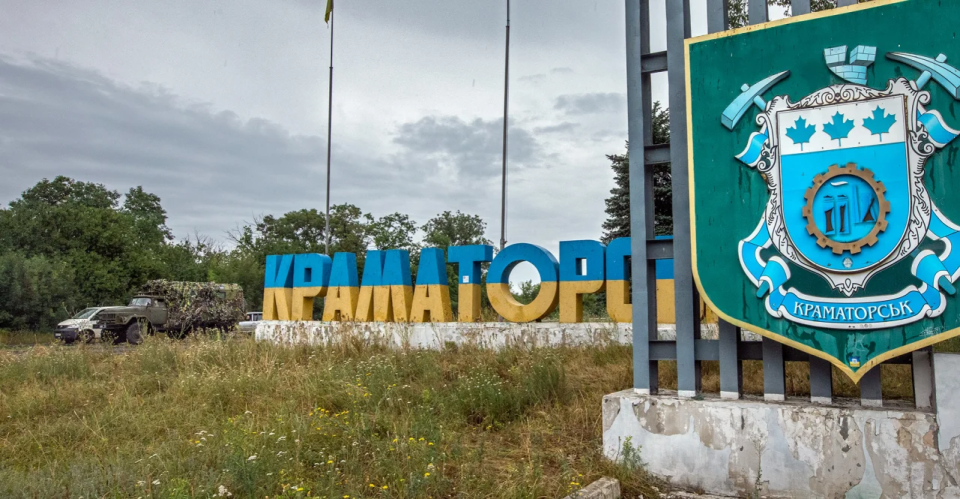
Serhiy, a soldier of the 93rd Separate Mechanized Brigade, with whom NV had already spoken in Kramatorsk, says that since the beginning of the full-scale invasion the enemy has been trying to fight its way to the administrative borders of the Luhansk and Donetsk regions.
So encircling Slovyansk from the eastern side still remains in the enemy's plans – this is the line of advance from Izyum. But taking into account the fact that the main forces of the Russians were thrown further east – to Lysychansk and Severodonetsk, where the Ukrainian troops gave them a bloody battle before retreating – the enemy is now taking a short break, to bring exhausted and battered units back to a more or less capable condition.
But in Donetsk Oblast there are daily clashes with the enemy, which is trying to advance both with armored vehicles and with infantry, says Serhiy. But the Ukrainians are resisting.
“For example, 15 units of enemy equipment were destroyed in a day by the 95th brigade, and 21 units by the 93rd,” he says.
The soldier also says that the appearance at the front of the U.S. HIMARS multiple rocket systems, which can hit targets at distances of up to 70 kilometers, has significantly strengthened the capabilities of the Ukrainian army. The judicious use of the HIMARS has thrown the Russians off balance.
But, Serhiy adds, these systems can also fire missiles with ranges of more than 100 kilometers, and it would be good to get those from Ukraine’s allies – this would make it possible to inflict even more blows on the rear bases of the enemy.
Read also: One day on the evacuation train that takes scores westward from war-torn Donbas
Summarizing, the soldier says that the further execution of combat missions in Donbas will depend on the speed with which Ukraine is provided with weapons and equipment.
Kramatorsk
The center of Kramatorsk is full of bright symbols: A monument to Taras Shevchenko flanked by Ukrainian flags, and behind it a residential building, on which a bright mural with the inscription “Exaultation” has been painted.
But the mood of the city's residents is far from upbeat. “Why are you filming here?” a woman, an employee of the city hospital, shouts at NV. “Now you will show that we have a beautiful square, and tomorrow it will be bombed!” she continues, angrily.
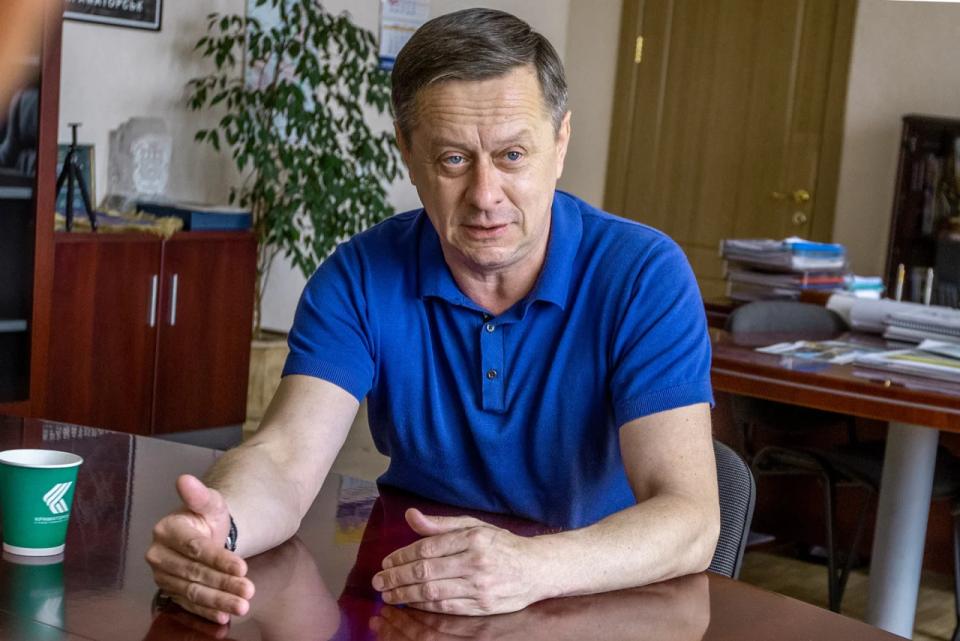
Later, the woman medical worker admits that the whole city is very afraid of shelling.
“I've been speaking Russian all my life, so it turned out – am I to blame for this?” says the woman, calming down a little. She does not understand why Russia decided to “liberate” the Donbas, because despite the fact that the residents here speak Russian, they still want to live in Ukraine.
Kramatorsk, in which more than 150,000 people lived until Feb. 24, when Russia’s full-scale invasion started, is now half empty. But those who came here a few months ago are now noticing a strange trend: people are returning to the city. Cafes and shops have reopened in the center.
Oleksandr Honcharenko, the mayor of Kramatorsk, who is now the head of the city's military administration, says 10,000 locals returned in May-June. So, the population is now up to 60,000 people. Calls to evacuate the locals no longer work and only irritate people, Honcharenko says sadly. Although the city is far from the front line, it is still under threat: on July 7, the Russians hit its central part with a rocket.
But the city’s main challenges still lie ahead – not only a possible intensification of hostilities, but also the heating season. Donetsk Oblast now has no gas supply. Repairmen cannot reach the damaged main gas supply line and restore supplies.
Read also: Ukrainian patrol officer shares story of evacuation of 42,000 people from Luhansk Oblast
Honcharenko believes that the city will face a communal disaster in autumn and winter. After all, there are 912 high-rise buildings, which is 60,000 apartments. Some 70% of the apartments have central heating, while 30% are in the private sector. In the high-rise buildings, with the onset of cold weather, the water will have to be shut off to stop the pipes freezing.
“Imagine you live on the eighth floor of a high-rise building,” he says, describing the possible future for cit residents. “The elevators aren’t working (for safety reasons), there's no heating, there's no gas, there's no water, there's no sewerage.”
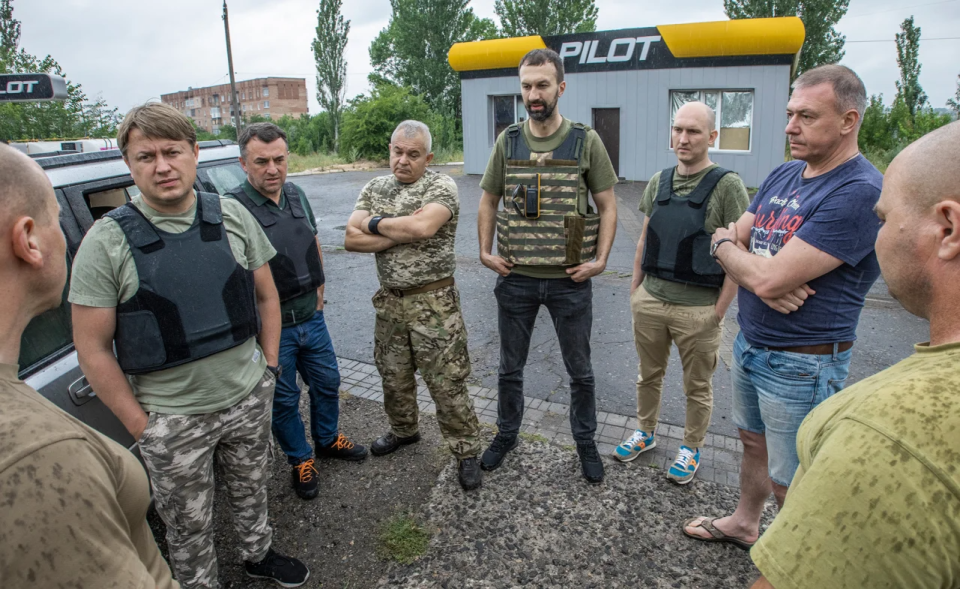
If everyone uses electric heaters, the electicity network will not be able to withstand the load, Honcharenko adds.
Honcharenko is already trying to get through the townspeople. His maximum goal is for residents of high-rise buildings to leave Kramatorsk, or at least to move to friends in the private sector. But there, too, one must prepare for a difficult life – start looking for wood stoves to heat the premises with firewood and coal. “People will all have to live in one room, which they can heat,” Honcharenko says. He still hopes that he can persuade the residents to temporarily leave the city.
“If it was possible to move the front line by 15 kilometers, it would allow the gas supply to be restored," he says. “But we have to prepare for the worst scenario and the cold weather.”
Chasiv Yar — Bakhmut
From Kramatorsk NV moves to the southeast – towards Bakhmut. This city has now become practically the hottest spot for fighting in Donetsk Oblast.
On the way, we stop at a non-operational gas station. Here a small volunteer group that was created in spring by the Deputy of the National People's Congress Andrii Gerus, is handing over a pickup it bought to the representatives of the 25th Brigade.
This time the group has brought a total of three cars and drones to the front for various brigades, and in five months they delivered more than 60 pickup trucks to the soldiers.
Accepting the car at the gas station and signing the documents, a soldier from the 25th brigade says that artillery is currently working on the front and there is a shortage of 122 mm caliber ammunition.
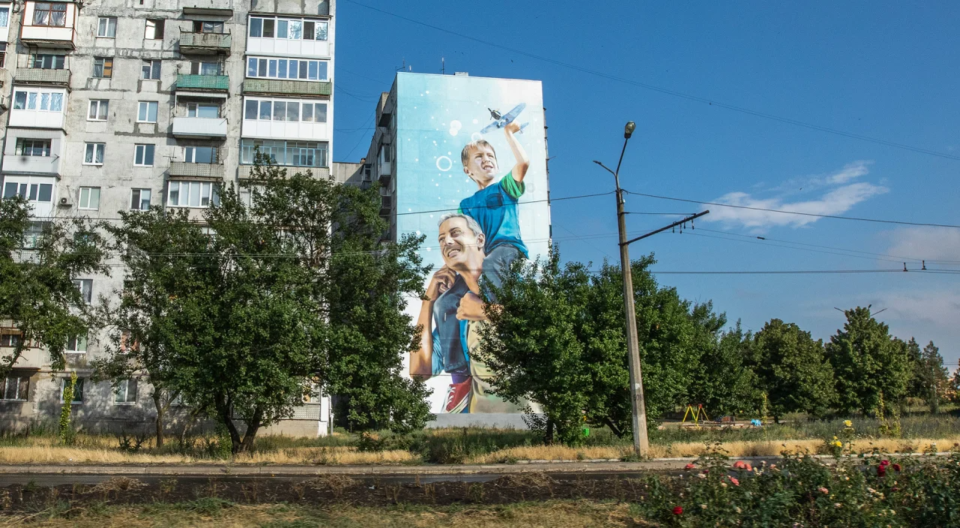
“But we're waiting for a delivery, and there are solutions in any case,” he says.
According to him, some kind of regrouping is taking place among the Russians. This looks like an operational pause, but the enemy could be deliberately misleading the Ukrianian army in order to conduct reconnaissance.
“But you can’t say that they want to change the battle tactic, as they only have one tactic – scorched earth,” the soldier says.
In Donetsk Oblast, the Russian army will faces more problems than in Luhansk Oblasts, he is convinced. After all, here Ukraine controls at least five large cities, and there is a lot of infrastructure that can be used to keep the defense. “We'll do everything we can to stop them from getting through,” the soldier says.
Read also: Russia to resume Donbas offensive after operational pause, U.S-based think tank says
The soldiers say exactly the same thing in Bakhmut, where the volunteer group is bringing another pickup truck. Unlike Kramatorsk, where at least in the center there are people on the streets, and trolleybuses still run through the city itself, Bakhmut, which once had a population of 70,000, is completely deserted. Civilians are hiding from shelling in basements, say the military. On the day NV was here, the Russians hit the city’s football stadium.
The Ukrianian military here says that now the main problem on this part of the front is not a shortage of weapons (which are gradually coming), but the fatigue of the troops: many of them have been in the hottest places for a long time without any leave. There are brigades that have been fighting in Donbas for a year without changes in personnel.
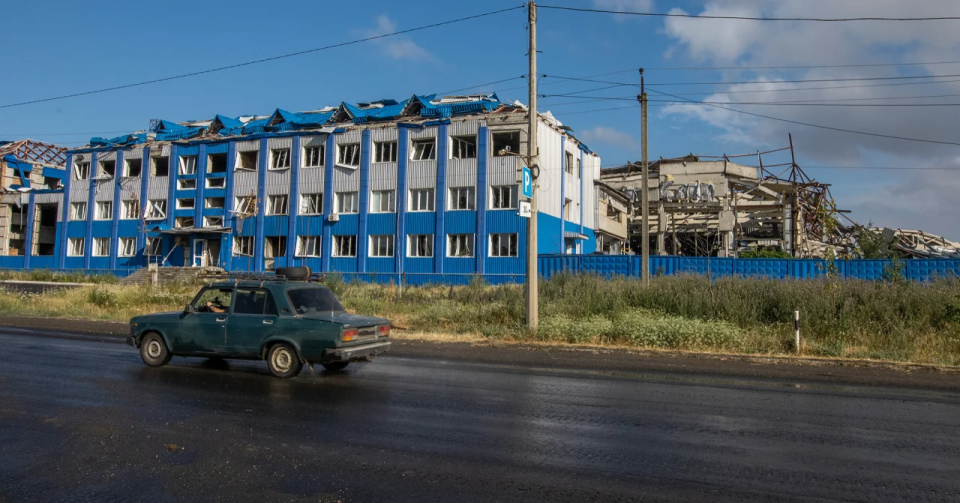
“Let some of the people go for at least two weeks and they will return with new strength,” says a reconnaissance soldier with whom NV spoke in Bakhmut.
He has no complaints about anything else, and he’s is optimistic and confident that Ukraine’s army will win the battle for Donbas.
But very close to Bakhmut is the small town of Chasiv Yar, where now there is no optimism, but only human grief. On July 9, the Russians hit a local hostel, killing 48 people.
Tired rescuers are working at the scene of the tragedy, where there are also tense military personnel and upset and injured residents of neighboring houses. Among the dead are both civilians and soldiers.
No one in Chasiv Yar wants to speak to NV at this spot. But the other day, the head of the Ternopil Oblast Administration, Volodymyr Trush, announced on social networks that as a result of the attack on the dormitory, among others, servicemen from Ternopil Oblast had been killed.
“That evening, I cooked borscht, made meatballs – no one expected trouble,” recalls Nadiya, a resident of the building next to the dormitory. She sits on a bench with her husband Valeriy, whose injured forehead is covered with a gauze bandage, and who is smoking nervously.
At 9:00 p.m., the first explosion rang out, and the mosquito nets in her windows were blown out, Nadiya recalls. The couple hid in the bathroom, and then went outside to get the nets. They returned – and a second blast occurred. Valeriy fell face down into some glass, while Nadiya was luckier. “We got out from under the rubble and that's it,” she says.
According to Pavel Kyrylenko, the head of the Donetsk regional military administration, there are still 340,000 civilians in the Ukrainian-controlled territory of the Donbas, which is 20% of the numbers that were there before Feb. 24. The authorities continue to call on people to evacuate every day, and the military to prepare for new battles.
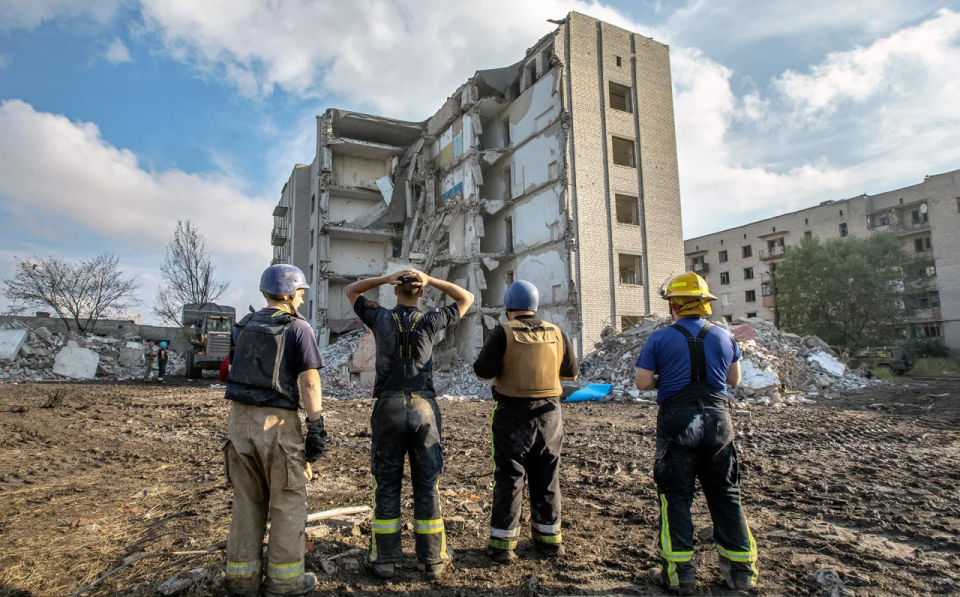
Valeriy advises NV to get out of this dangerous city as soon as possible.
“I can go now, what about you? Why don't you go? After all, another attack could happen,” I ask the injured man.
“Then it will finally be over,” Valeriy says hopelessly, still looking shocked.
Read the original article on The New Voice of Ukraine

